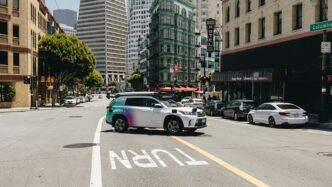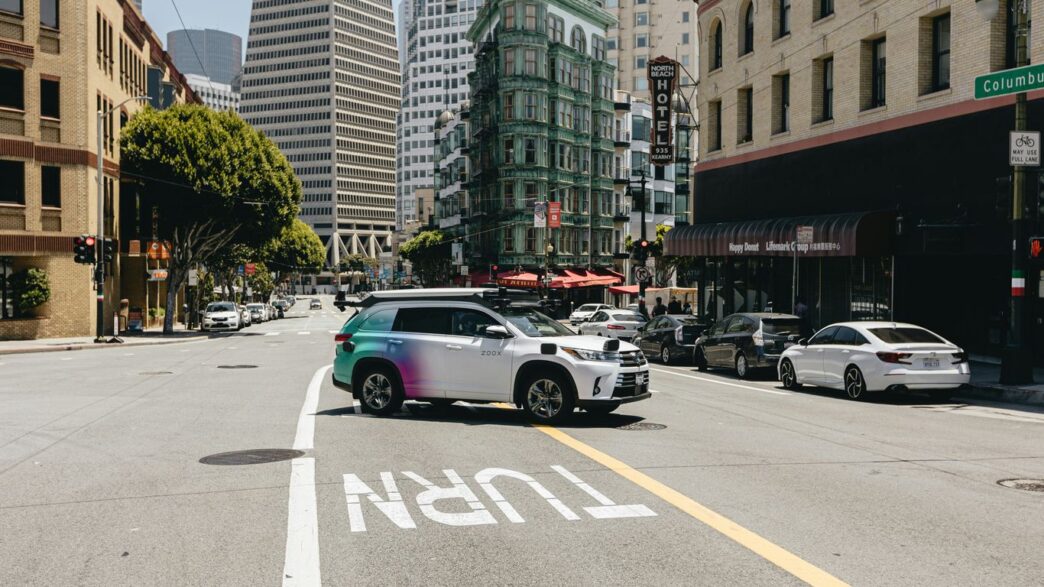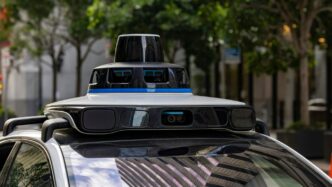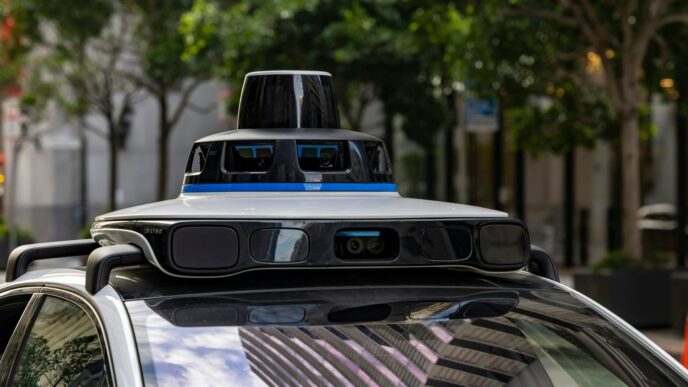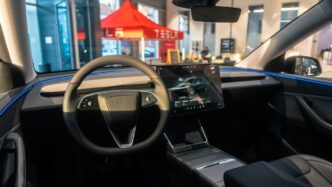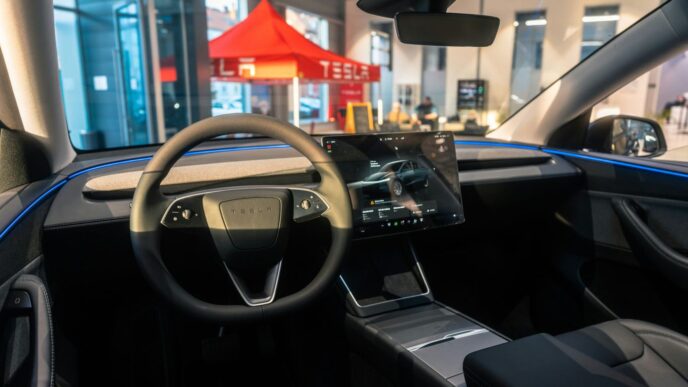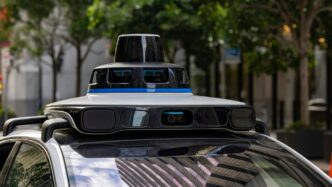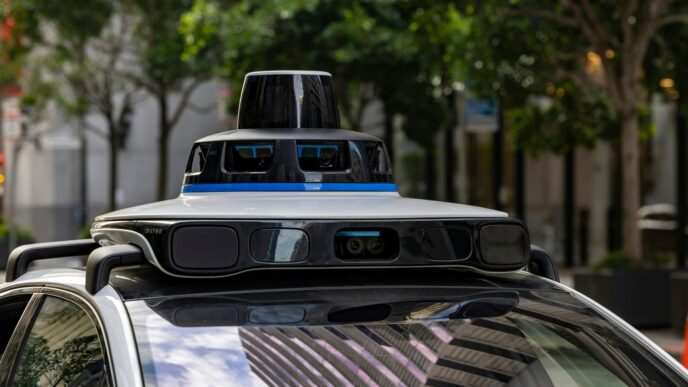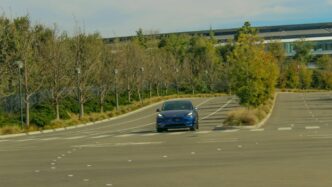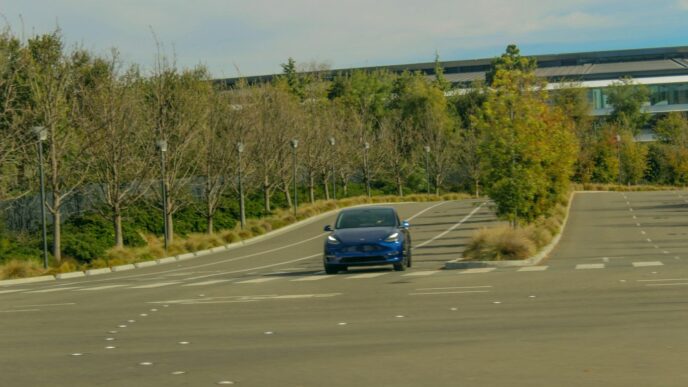The Genesis Of Waymo Founded
Waymo’s story didn’t just start with a name change; it’s rooted in a long-standing ambition to make driving safer and easier. Think back to the early 2000s. There was this big competition called the DARPA Grand Challenge, a sort of race for self-driving vehicles. A team from Stanford, which included some folks who would later be super important, did really well in these challenges. That early work showed that self-driving cars weren’t just science fiction anymore.
From DARPA Challenges to Google’s Vision
So, after those DARPA challenges, the idea of making self-driving cars a reality really took hold. Google saw the potential. In 2009, they officially kicked off what was then called the Google Self-Driving Car Project. It was a big undertaking, bringing together smart people who had been part of those early DARPA efforts. They weren’t just tinkering; they were building something that could actually work on real roads. The goal was to fundamentally change how people get around.
Key Figures in Early Development
When you talk about the beginning, a couple of names pop up a lot. Sebastian Thrun, who had directed the Stanford Artificial Intelligence Laboratory, was a major player. He was one of the leaders who saw the promise from the DARPA challenges. Then there was Anthony Levandowski, who had his own background in robotics and self-driving tech. These guys, along with a whole team of engineers and researchers, were the ones pushing the project forward in those early, formative years. It was a mix of academic smarts and practical engineering.
The Official Launch and Public Reveal
After years of testing and development, the project started to become more visible. By October 2010, Google decided to show off what they had been working on. It was a big reveal, letting people know that this wasn’t just a side project. Later, in the fall of 2015, they hit a major milestone: the world’s first fully driverless ride on public roads. This wasn’t just a short test; it was a real trip, showing the technology was getting closer to being ready for everyday use. It was a clear signal that the future of transportation was being built right then.
Evolution From Google Project To Alphabet Subsidiary

It’s easy to forget that Waymo didn’t just appear out of nowhere. It actually started as a secret project within Google, way back in 2009. Think of it as Google’s ambitious attempt to figure out this whole self-driving car thing before anyone else really got going. The early days were all about tinkering and testing, mostly in secret.
The Google Self-Driving Car Project Begins
So, the whole thing kicked off in January 2009. It was part of Google X, the company’s experimental division. The main folks behind it were Sebastian Thrun, who came from Stanford’s AI lab, and Anthony Levandowski. They had already been working on self-driving tech, even competing in those DARPA challenges. They took what they learned and started building on it at Google. They even bought out a couple of companies, like 510 Systems, to bring in more talent and tech. It was a pretty big investment for Google, spending over a billion dollars between 2009 and 2015. They were serious about this.
Spinning Out As Waymo
After years of development and testing, including what they called the "world’s first fully driverless ride on public roads" back in 2015, the project needed its own space. In December 2016, Google announced that the self-driving car project was officially becoming its own company. This move separated it from the rest of Google and placed it under the new parent company, Alphabet Inc. This wasn’t just a name change; it was a strategic decision to give the autonomous driving effort its own identity and focus. It was officially named Waymo.
Establishing A New Identity Under Alphabet
Being part of Alphabet meant Waymo could operate a bit more independently. It allowed them to focus solely on advancing their self-driving technology and figuring out how to actually use it in the real world. This new structure helped them attract outside investment, which they’ve done quite a bit of, raising billions over the years. It also meant they could forge partnerships with car manufacturers and other companies without being directly tied to Google’s core search and advertising business. It was all about building a future for autonomous driving, separate but still connected to the Alphabet family.
Pioneering Autonomous Driving Technology
Waymo’s approach to self-driving tech is all about building a really solid system, not just a flashy demo. They call their core tech the ‘Waymo Driver,’ and it’s basically a super smart brain combined with a bunch of sensors that work together.
The Waymo Driver: AI and Sensor Suite
This isn’t just one piece of tech; it’s a whole package. Think of it like a car’s senses and its brain. The sensors are the eyes and ears – cameras, radar, and lidar (that’s like a laser scanner). These work together to see everything around the car, even in tricky weather or when it’s dark. The AI part is the brain that takes all that information and figures out what to do. It’s designed to handle pretty much any driving situation, all the time. They’ve put a lot of work into making sure it can understand the world around it, from spotting a pedestrian to predicting what another car might do.
Rigorous Testing and Real-World Experience
Building this tech is one thing, but making sure it’s safe is another. Waymo has spent years and millions of miles testing their vehicles. They started on closed courses and then moved to public roads, first with safety drivers and now, in some places, without anyone in the car at all. They’ve driven in all sorts of conditions – sunny days, rain, busy city streets, and highways. This isn’t just about racking up miles; it’s about encountering and learning from countless real-world scenarios. They’ve been driving 24/7 in places like Phoenix and San Francisco, getting the AI used to different cities and road types.
Commitment to Safety and Reliability
For Waymo, safety isn’t just a buzzword; it’s the main goal. They’ve built their system with layers of redundancy, meaning if one part fails, another can take over. They also focus on making the ride smooth and predictable for passengers. It’s not enough for the car to just get from point A to point B; it needs to do it safely and comfortably. They’re constantly updating the software based on all the data they collect from their testing and public rides. This continuous improvement loop is key to building trust and making sure the technology is ready for more people.
Scaling The Autonomous Future
So, how does Waymo actually get these self-driving cars from a cool tech demo to something you might actually use every day? It’s not just about having the tech work in a lab, right? It’s a whole different ballgame when you’re talking about putting them on real streets, with real people, and making sure it all runs smoothly.
Key Pillars of Waymo’s Scaling Strategy
Waymo’s approach to making self-driving a reality for more people isn’t just one big idea. They’ve broken it down into a few main parts. Think of it like building a house – you need a solid foundation, good walls, and a reliable roof.
- Robust Technology: This is the core, obviously. It’s about making sure the "Waymo Driver" – that’s their fancy name for the AI and all the sensors – can handle pretty much anything, any time of day, any kind of weather. The goal here is to make it so reliable that it doesn’t need a human to jump in very often.
- Operational Excellence: Once the tech is good, you need to be able to manage a whole bunch of cars. This means figuring out the best way to get them where they need to go, keep them maintained, and handle any customer questions or issues. It’s the behind-the-scenes stuff that makes a big fleet actually work.
- Community Engagement: You can’t just drop self-driving cars into a town and expect everyone to be okay with it. Waymo spends time talking to people in the areas where they operate, including local officials and emergency services. It’s about building trust and making sure everyone feels comfortable.
- Regulatory Collaboration: Laws and rules for self-driving cars are still being figured out. Waymo works with governments to help create sensible rules. This makes it easier for them to operate and grow without constant uncertainty.
Operational Excellence and Fleet Management
This is where the rubber meets the road, so to speak. Running a fleet of autonomous vehicles is a massive logistical puzzle. It involves:
- Deployment and Routing: Deciding where cars should be at any given time to meet demand, and how to get them there efficiently.
- Maintenance and Upkeep: Keeping the vehicles in top condition, from software updates to physical repairs. This needs to be done quickly and effectively to minimize downtime.
- Remote Support: Having teams ready to help if a vehicle encounters a situation it can’t handle on its own, or if a passenger needs assistance.
Community Engagement and Regulatory Collaboration
Getting people to accept and trust self-driving cars is a big hurdle. Waymo tries to address this by:
- Public Demonstrations and Education: Showing people how the technology works and answering their questions.
- Working with Local Leaders: Keeping city officials and police departments informed about their operations.
- Advocating for Clear Rules: Helping lawmakers understand the technology so they can create fair and safe regulations. This collaborative approach is key to building the public’s confidence and paving the way for wider adoption.
Leadership And Vision
Waymo’s journey is really about more than just cool tech; it’s about how you actually get this stuff out into the world safely and reliably. At the helm, you’ve got Tekedra Mawakana, who’s been around the block in big tech for a while, shaping strategies for major companies. Now, as co-CEO of Waymo, she’s focused on making the Waymo Driver something everyone can use, pushing the boundaries of what self-driving can do.
Tekedra Mawakana’s Strategic Guidance
Tekedra Mawakana brings a ton of experience to the table. Before Waymo, she was already a big player, working on global strategies for huge tech firms. This background gives her a unique view on how technology, business, and society all fit together. She’s not just focused on Waymo; she’s also on the board at Intuit and advises other tech and social impact projects. This broad perspective is super helpful when you’re trying to figure out how to grow something as complex as autonomous driving.
Co-CEO Leadership Model
Waymo has adopted a co-CEO leadership model, with Tekedra Mawakana at the forefront. This approach often means shared responsibilities and a collaborative decision-making process. It’s a way to bring different strengths together to guide the company through its ambitious goals. The idea is to combine diverse viewpoints to steer Waymo toward its objective of making autonomous driving a common sight.
Shaping The Future of Mobility
Waymo’s vision goes beyond just building self-driving cars. They’re thinking about how this technology changes how we all get around. It’s about creating a new kind of transportation system. Mawakana’s leadership is key to this, focusing on practical steps to make autonomous vehicles a reality for more people. This involves:
- Developing the Waymo Driver: This is the core AI and sensor system that needs to work in all sorts of conditions.
- Building Operational Excellence: You can’t just have the tech; you need to manage fleets, maintenance, and customer service effectively.
- Working with Communities and Regulators: Getting people to trust and accept this new technology, and helping to create sensible rules, is a big part of the puzzle.
The company’s strategy is built on these pillars, aiming for steady, safe progress rather than just rushing ahead. It’s a methodical approach to integrating a transformative technology into our daily lives.
Milestones In Public Deployment
It’s one thing to talk about self-driving cars in a lab, but it’s another entirely to see them out there, actually picking people up and taking them places. Waymo has been working towards this for a long time, and they’ve hit some pretty big markers along the way.
First Fully Driverless Ride
This was a huge moment. After years of testing and refining, Waymo finally offered rides where there wasn’t a safety driver behind the wheel. This wasn’t just a quick demo; it was the start of something real. They began letting their own employees take rides in San Francisco without a driver in March 2022. It showed that the technology was ready for the next step, moving beyond just testing to actual public use.
Launching Commercial Ride-Hailing Services
Waymo One, their ride-hailing service, has been the main way people experience their technology. It officially launched in December 2018, though initially, some rides still had safety drivers. The big shift happened in November 2019 when Waymo One became the first autonomous service globally to operate without any safety drivers at all. This was a game-changer. Since then, they’ve been steadily expanding, offering paid rides to the public.
Here’s a look at some of their commercial service launches:
- Phoenix, Arizona: Full commercial service started on October 8, 2020. They even began airport service at Phoenix Sky Harbor International Airport on November 1, 2022.
- San Francisco, California: After initial testing, full commercial service began on June 25, 2024. They also announced plans for airport service at San Francisco International Airport.
- Los Angeles, California: Commercial service kicked off on November 12, 2024.
- Austin, Texas: Launched full commercial service with Uber on March 4, 2025.
- Atlanta, Georgia: Started full commercial service with Uber on June 24, 2025.
Expanding Service Areas and Offerings
Waymo isn’t just staying in one spot. They’re constantly adding new areas and figuring out new ways to use their technology. They’ve gone from a few select neighborhoods to covering larger metro areas. They’re also looking at different types of services, like trucking and delivery, not just passenger rides. By October 2024, they were already giving about 100,000 paid rides weekly across their main cities. By March 2025, that number jumped to 200,000 rides per week. They’ve even announced plans for future testing and service in places like Miami, Nashville, Dallas, and Washington D.C., showing a clear push to make autonomous driving a common part of everyday life.
Partnerships And Industry Impact
Waymo didn’t build this whole self-driving thing in a vacuum, you know? They’ve teamed up with a bunch of different companies to get their tech out there and make it work in the real world. It’s not just about making the cars; it’s about figuring out how they fit into everything else.
Collaborations with Vehicle Manufacturers
Think about it, Waymo needs actual cars to put their "Waymo Driver" system into. They’ve partnered with some big names in the auto industry. This isn’t just about slapping their tech onto any old car. It’s about working together to make sure the vehicles are designed from the ground up to handle autonomous driving. They’ve had deals with Fiat Chrysler (now Stellantis) for a while, using their Pacifica minivans. More recently, they’ve announced plans with companies like Zeekr, a Chinese electric vehicle maker, to develop new cars specifically for Waymo’s ride-hailing service. This means the cars are built with the sensors and computing power needed, right from the factory.
Advancements in Autonomous Trucking
It’s not just about shuttling people around town. Waymo is also looking at the big rigs. Their trucking division, Waymo Via, is working on making long-haul trucking safer and more efficient. They’re testing their autonomous trucks on highways, which is a whole different ballgame than city streets. They’ve been working with logistics companies to figure out how these trucks can actually pick up and drop off goods. The goal here is to help with the shortage of truck drivers and make shipping cheaper and faster. It’s a huge undertaking, and they’re doing it step-by-step, focusing on specific routes and types of cargo.
Integration with Delivery Services
Beyond just moving people and freight, Waymo is also exploring how their technology can help with deliveries. Imagine getting your groceries or packages delivered by a car with no one behind the wheel. They’ve done pilot programs with companies like Walmart and Domino’s Pizza. The idea is to use their autonomous vehicles for local delivery runs. This could change how we get things, making it quicker and maybe even more affordable. They’re still figuring out the best way to make this work smoothly, but it’s a big part of their plan to use self-driving tech for more than just taxis.
The Road Ahead
So, Waymo’s story isn’t just about fancy tech; it’s about a really slow, careful build. They started way back when self-driving cars felt like science fiction, and they’ve kept at it, learning and testing. Unlike some others who made big promises and then stumbled, Waymo seems to be taking a more grounded approach. They’re focusing on making the technology work reliably, city by city, and that takes time. It’s clear that getting these cars truly ready for everyone, everywhere, is a huge challenge. But Waymo’s persistence shows they’re serious about making autonomous driving a real thing, not just a dream. We’ll have to see how it all plays out, but they’ve definitely set a pace for the rest of the industry.

